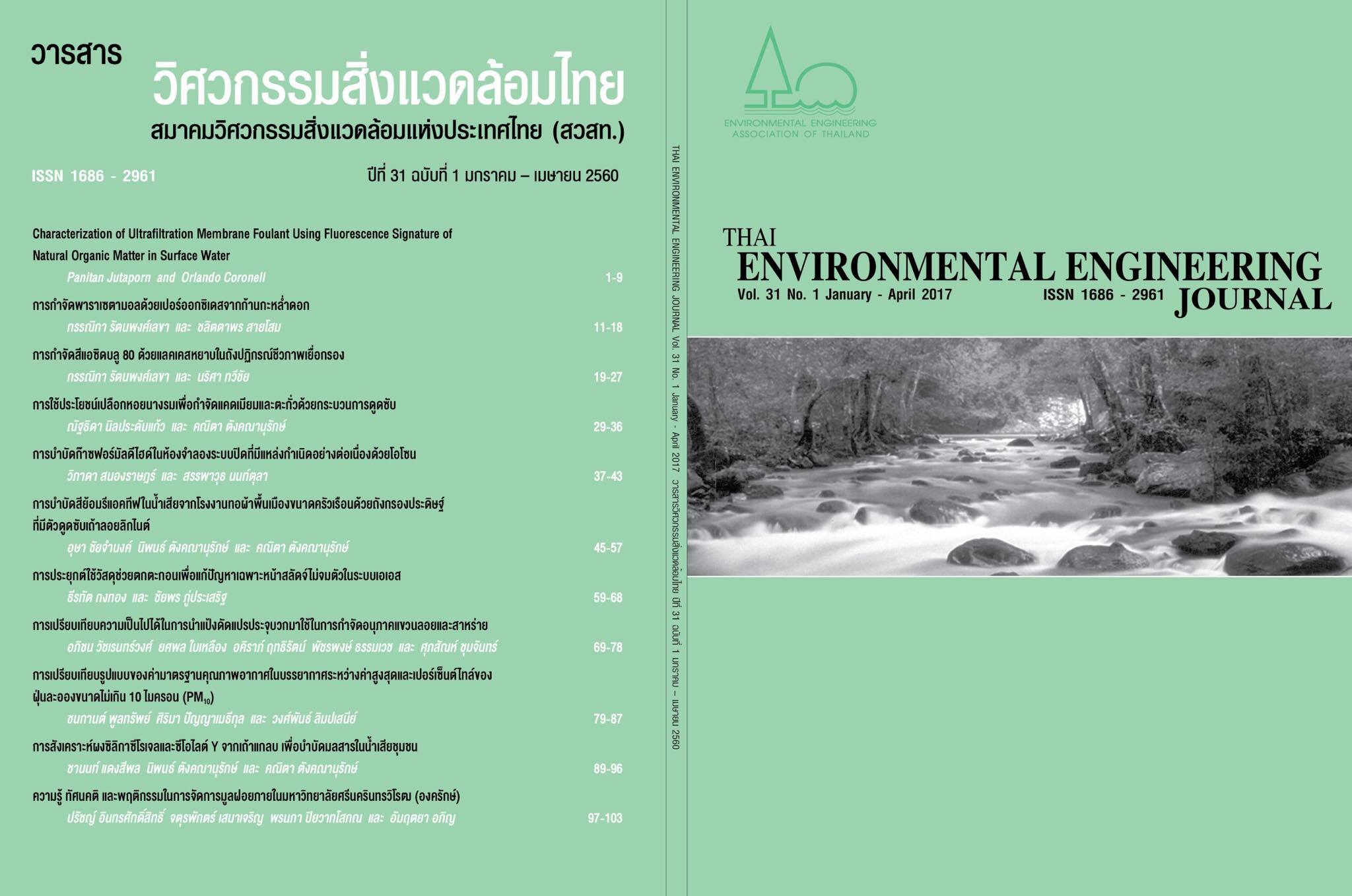The Comparison of Forms of Ambient Air Quality Standards between Highest Value and Percentile Value for PM10
Main Article Content
Abstract
The purpose of this research is to study the suitable form of Thailand National Ambient Air Quality Standard (NAAQS) of 24-hour PM10 (Short-term standard) for assessing the effective policy in the long term and recommend the standard value of NAAQs in the new form that is as stringent as before. This study compared the existing form of 24-hour PM10 Air Quality Standards (maximum 24-hour PM10) with the proposed 95th-percentile (P95) and 98th-percentile (P98) values by using air quality data from PCD of Thailand for 10 years (B.E. 2548-2557). The scatter diagram shows that correlation coefficient (R) between annual average (AN) with 95th-percentile (P95), 98th-percentile (P98) and maximum (A1) values were found to be equal to 0.8517, 0.7822, 0.6880 respectively, Therefore, it can be concluded that 95th-percentile is a more suitable form of short term standard. Furthermore, the new standard should be as stringent as before based on the number of stations that exceed the standard each year in conjunction with linear regression analysis. The appropriate standard in the P95 form was found to be equal to 80 µg/m3. It is proposed that the 95th-percentile (P95) standard value of 80 µg/m3 can be used as a better form of 24-hour PM10 standard and can evaluate the situation of air quality with less fluctuation from year-to-year. As a result, the government can make a more consistence mitigation policy than the past.
Article Details
References
[2] Syafei, A. 2014. Analyzing and Interpreting Air Quality Monitoring Data in Surabaya. Doctoral Dissertation. Department of Engineering, Graduate School, Hiroshima University.
[3] Chock, D. P. 1989. The Need for a More Robust Ozone Air Quality Standard. JAPCA: 1063-1072.
[4] U.S. Environmental Protection Agency. 2013. a. Regulatory Impact Analysis for the Final Revisions to the National Ambient Air Quality Standards for Particulate Matter [Online].U.S.EPA. Avaliable from : https://www3.epa.gov /ttnecas1/regdata/RIAs/finalria.pdf.[2016, January01].
[5] U.S. Environmental Protection Agency. 2010. Final Regulatory Impact Analysis (RIA) for the NO2 National Ambient Air Quality Standards (NAAQS) [Online]. U.S.EPA. Avaliable from : https:// www3. epa. gov/ttnecas1/regdata/RIAs/FinalNO2.pdf. [2016, June 06].
[6] World Health Organization.1980. Analysing and interpreting Air monitoring data. vol.51.Switzerland; Geneva.
[7] U.S. Environmental Protection Agency. 2013.b. Quality Assurance Handbook for Air Pollution Measurement System[Online]. 2 Vols.U.S.EPA. Avaliable form : http:// www3.epa.gov/ttn/amtic/files/ambient/pm25/qa/QA-Handbook-Vol-II.pdf. [2016, January 01].
[8] Eionet European Topic Centre on Air Pollution and Climate Change Mitigation. 2014. Aggregation of data[Online]. Avaliable form : http://acm.eionet. europa. eu/databases/airbase/aggregation_statistics.html[2016,February 01].
[9] Kitpeeda, B. 2010. Statistical Analysis for Research. Bangkok : Keaw house printing publicing company.


